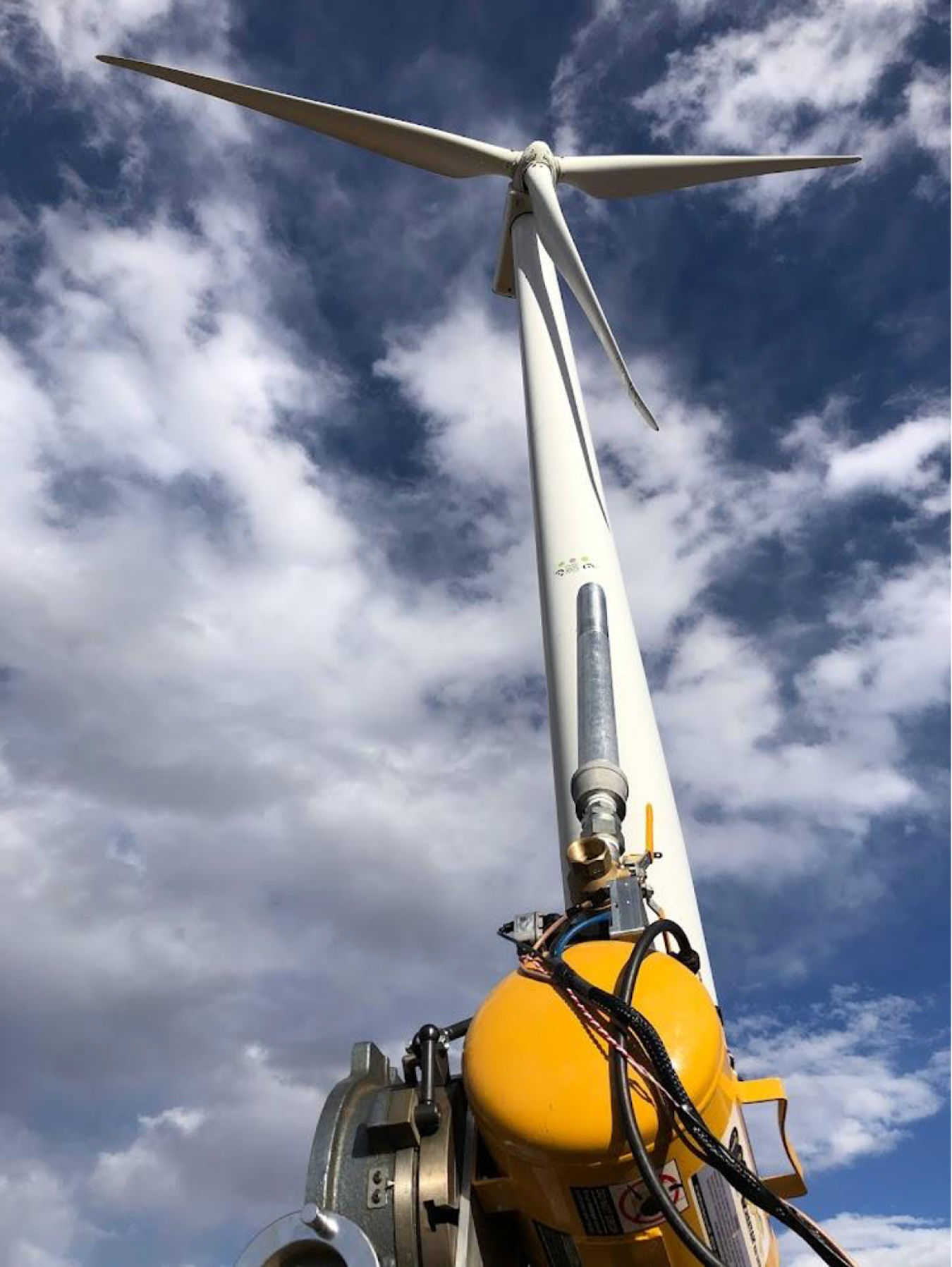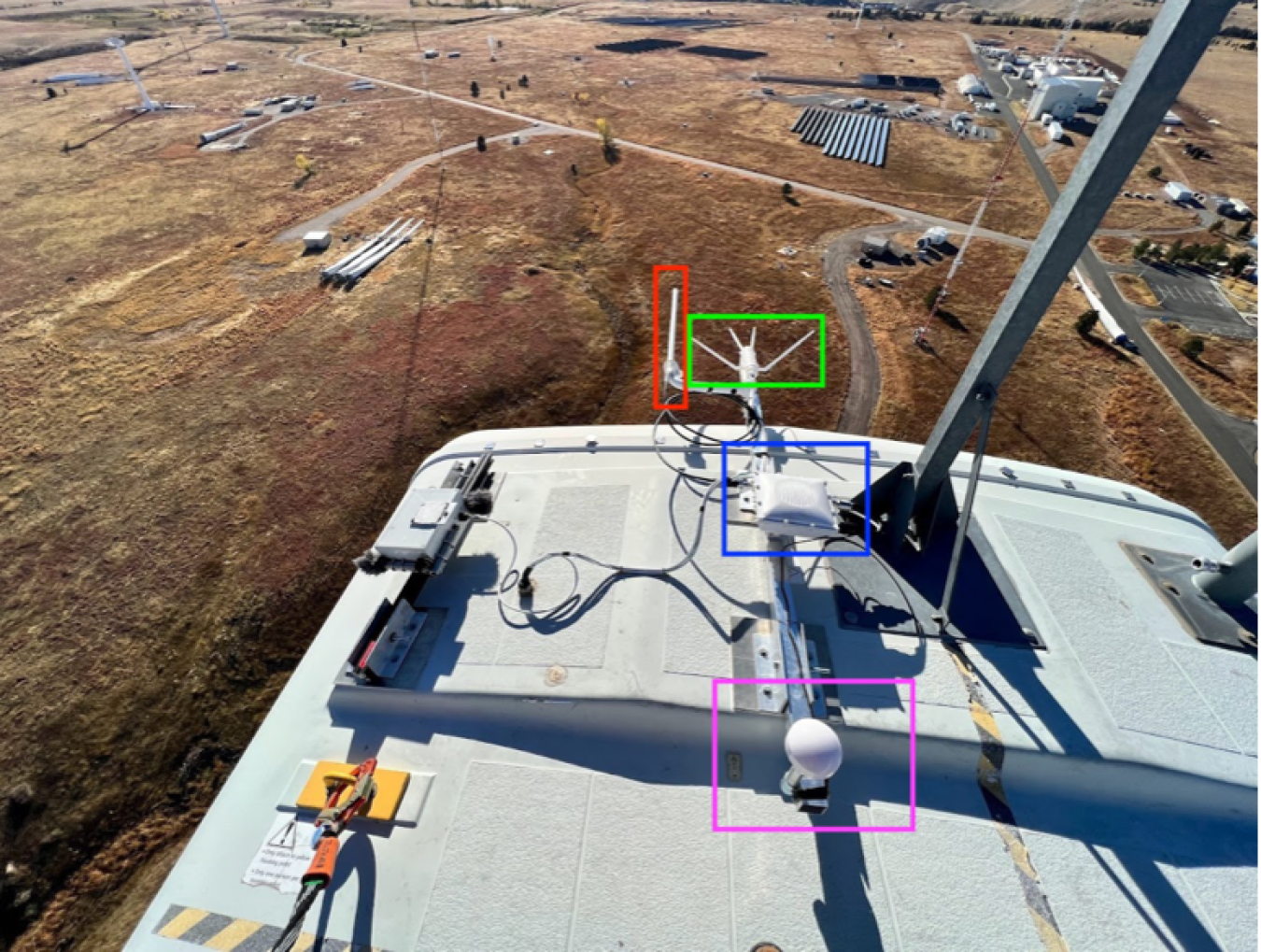Detection Technology can Help Minimize Wind Turbine Interactions with Birds and Bats
Detecting wind turbine interactions with birds and bats is essential to determine and minimize the effects of wind energy on wildlife species and populations. Mitigating environmental impacts is even more crucial as wind energy technology expands to help meet the Nation’s goal of achieving a carbon pollution-free power sector by 2035 and net zero emissions economy by no later than 2050.
Funded by the U.S. Department of Energy’s Wind Energy Technologies Office (WETO) and in partnership with the National Wind Technology Center at the National Renewable Energy Laboratory (NREL), a team of researchers at Oregon State University is addressing this challenge by developing technologies to monitor how wind turbines coexist with birds and bats, from large birds, like golden eagles, to smaller marine birds, like marbled murrelets.

A ground-based compressed-air cannon aimed at a wind turbine’s rotor on NREL’s Flatirons Campus acts as a surrogate for avian-blade collision testing. The cannon was custom-designed and manufactured at the national lab. (Image from Oregon State University)
“We’re working diligently to ensure the safe coexistence of wind turbines with wildlife,” said Roberto Albertani, a researcher at Oregon State University. “Now, as wind energy evolves, it’s more crucial that designed technologies ensure this coexistence with land-based and offshore wind farm developments.”
To determine if a bird or bat has contacted a wind turbine blade, the research team installed accelerometers to provide real-time data on structural vibrations (contacts) and acoustic recordings (noises from approaching wildlife) that would result from such interactions.
To obtain data and test the devices without harming wildlife, the research team needed to mimic the movements of wildlife. Their solution: tennis balls.
“We worked collaboratively with wind turbine operators to ensure that our methodology was safe,” Albertani said. “The reward was a bounty of technical data that was fundamental in the system’s tuning and validation.”
Data from these artificial wildlife impact tests in New Mexico and Colorado were used to evolve the team’s wildlife monitoring platform. The platform now includes a multisensor system comprised of blade-mounted cameras and vibration sensors. The result is around-the-clock measurements, detection of bird or bat calls, and pictures or videos of wildlife potentially approaching wind turbines.
“Our work is to be the eyes and ears, so to speak, of wind turbines to help biologists and wind farm operators better understand these wildlife interactions,” Matthew Johnston, a researcher at Oregon State University.
In a related project, the research team partnered with wildlife biologists to explore methods to deter eagles from passing through wind farms, including the unconventional use of inflatable, kinetic “air dancer” devices more commonly used to attract customers to sales lots and businesses, acting like moving scarecrows.

Networking infrastructure installed on the head of the General Electric 1.5-megawatt wind turbine at NREL. Components include a LoRa antenna (orange), WiFi router (green), LoRaWAN gateway (blue) and GPS antenna (magenta). (Image from Oregon State University)
Additionally, the research team collaborated with computer scientists to explore methods to detect and identify specific bird species flying close to rotor blades using a camera mounted on the wind turbine. These techniques could be used in the future to pause wind turbine operations when protected species are nearby.
“The project offered us an opportunity to design new technologies and sensor systems in the lab and test them on a functional wind turbine,” said Kyle Clocker, who completed his doctoral degree at Oregon State University where he worked on the project and led several field tests at NREL’s Flatirons Campus in Colorado. “Taking new technology out of the lab and into the field is an incredibly unique opportunity.”
The data collected from cameras and vibration sensors continue to inform next steps in this research. The goal is to make this technology commercially available for land-based and offshore wind turbines to ensure a harmonic relationship between wind energy and surrounding wildlife.
NREL | www.energy.gov








